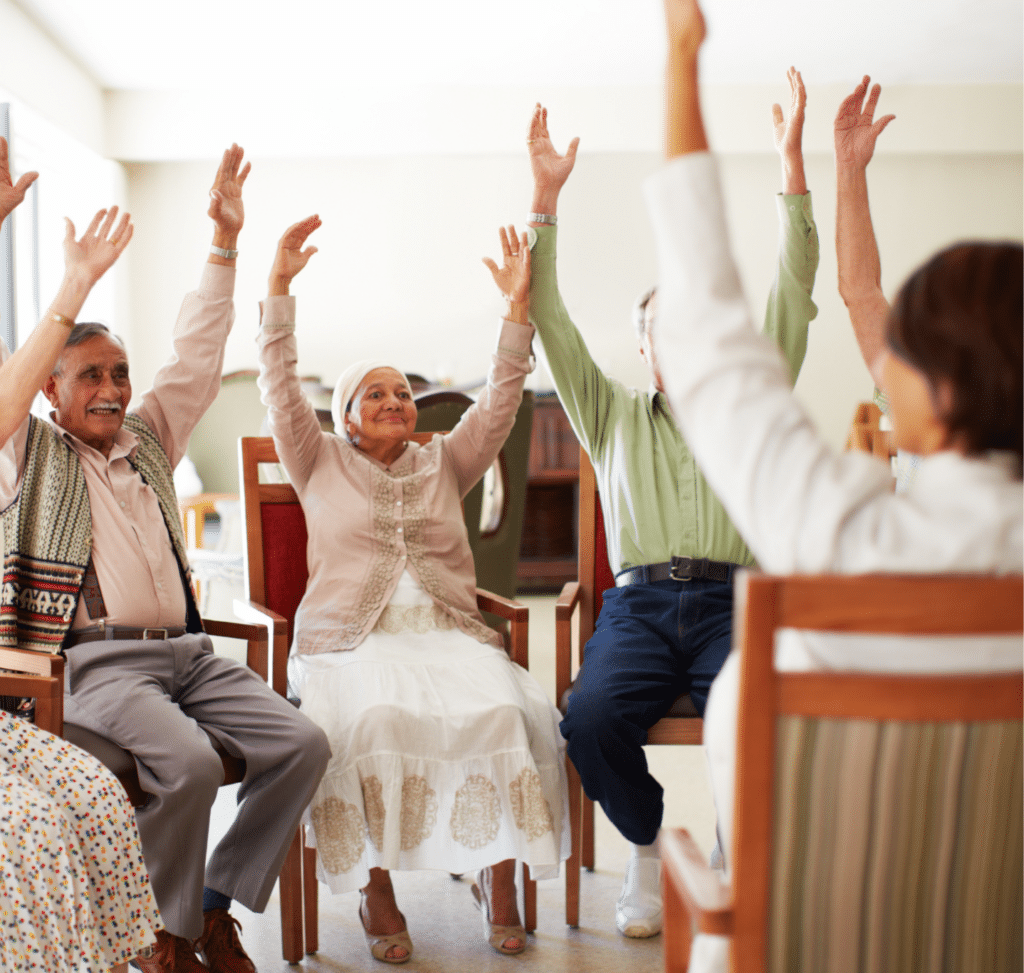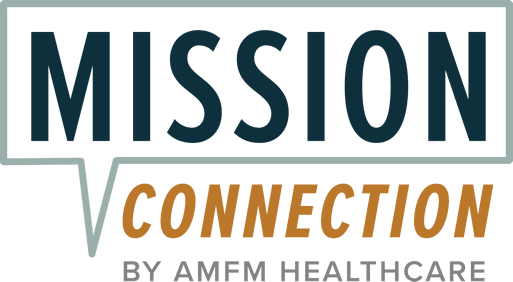Benefits of Exercise for Depression – The Role of Physical Activity in Mental Health

Depression can feel like being surrounded by thick fog – overwhelming, confusing, and devoid of color. When you’re struggling with severe depression symptoms like this, it’s easy to feel like there’s no way out. But what if a small activity like moving your body could help you to see through the fog?
Exercise has the ability to change your mental state as well as your physical state, potentially giving you some relief from your depression symptoms. Yet, it’s not always easy to stick to an exercise routine, and this is never more true than when you’re faced with a lack of energy and low mood, two characteristic symptoms of depression.
But why is exercising so good for depression? And how can it help to relieve depression symptoms? Keep reading to discover:
- The benefits of exercising for depression
- Exercise vs. medication: which is more effective?
- The different forms of movement that can help boost your mood
- Other forms of support for depression
Is Exercise Good for Depression?
Exercise isn’t just about improving your physical health – it also plays a role in managing your depression. Research shows that regular exercise can have a positive impact in reducing symptoms of depression and anxiety.1
But how does physical activity have such an impact on what we feel? Let’s look at five key benefits that make exercise a vital part of managing your mental health.

Key Takeaways
- Exercise can release feel‑good brain chemicals and improve mood in depression.
- Regular physical activity may increase energy, boost self-esteem, and reduce stress and anxiety.
- Even modest exercise (walking, yoga, light workouts) can support better sleep and improved overall mental health.
- Exercise works as a helpful complement to talk therapy and other treatments — not necessarily as a replacement.
- Starting small and building consistency matters; Small steps can make a large difference.
Table of Contents
5 Key Benefits of Exercise for Depression
1. How Movement Boosts Mood
You may have heard of neurotransmitters before when talking about depression: chemicals in the brain that affect your mood. When you exercise, some of these neurotransmitters are released – endorphins, endocannabinoids, and dopamine, to name a few. These all give you that feel-good aftereffect that you may have noticed after moving your body. This mood boost can alleviate some of the symptoms of depression.2
The Centers for Disease Control and Prevention (CDC) recommends engaging in at least 150 minutes of moderate-intensity exercise per week (equivalent to 30 minutes a day).3 However, we know how tricky this can be when you’re struggling with depression. Fortunately, research shows that even a quick 10-minute walk around the block can help you feel better and more alert, and give you a burst of energy!4
2. Physical Activity Can Be a Distraction
In fact, studies show that exercise can have more of a short-term positive effect on managing depression than activities such as journaling, which can cause you to focus more on negative thoughts you might be having.5
3. How Exercise Improves Confidence
Exercising positively influences how confident you feel in your looks or shape and how confident you feel in yourself. When you exercise you become fitter, healthier, and stronger, which can boost self-esteem. Exercise can also give you a more positive outlook on life, make it easier to express your needs, and make you less likely to focus on your weaknesses over your many strengths.
What’s more, each time you exercise you’re showing up and achieving something for your health, which naturally boosts self-esteem. Exercising also makes you more likely to get a good night’s sleep, which can help you feel even better about yourself and combat that lack of energy that comes from depression.7
4. Exercise Is a Healthy Coping Strategy
Unhealthy coping strategies tend to make you feel good in the moment but can have bad effects long-term, whereas healthy coping strategies don’t always provide instant mood boosts, but have positive long-lasting effects.8 Exercising allows you to walk away from a problem, refocus, and reap other health rewards that fitness also brings, making it one of the healthiest coping strategies.9
Note – as with all coping strategies, it’s important to make sure that exercise isn’t done compulsively or excessively. Even with healthy habits like exercise, there can be too much of a good thing!
5. Physical Activity Increases Social Interaction
Working or playing with others, pre- and post-workout chats, getting to know new people who enjoy the same things that you do – you’re connecting with others at a time when depression can make you feel cut off from other people.
Even though we all know that exercise is good for our health in general, sometimes that knowledge alone isn’t enough to make us commit to doing something. Getting that warm feeling inside, that happens when you are bonding with someone over a hobby, can sometimes be that extra motivator we need to get moving.
Is Exercise Just as Effective as Antidepressants?
What’s more, for some people, there can be barriers to exercising. For example, existing health conditions, cost, self-consciousness, or a lack of time. So, it’s important to choose a treatment approach that’s best for you, regardless of what the research says.
However, when it comes to the research, studies show that exercise can be as much as 1.5 times more effective at lowering mild-to-moderate depression symptoms, as well as anxiety and stress, compared to medication.11,12 Additionally, due to the lack of side effects in exercise compared to taking medication, it’s many people’s preferred treatment.
Different Forms of Exercise for Depression
Studies show that exercise or physical activity is beneficial for those with depression, but what type of exercise can work? Does it have to be all-or-nothing, or can something more gentle also be useful? We’ll look at a few of the best workouts for depression below.
1. Walking for Depression Relief
Walking is a great, low-impact, low-intensity form of exercise that can bring you the physical benefits of exercise while lifting your mood at the same time. Some of these include better sleep, stress relief, improved mood, increased energy, and feeling more mentally alert. As mentioned earlier, you can build up the positive effects even more by walking with friends or joining a walking group so that you have some company to encourage you along!13
2. Yoga for Mental Health
Developing a yoga practice for yourself can be a great way to improve your well-being overall. Not only will it help to make you stronger and more flexible, but the spiritual side of the practice encourages compassion, calmness, and self-awareness. Studies show that yoga can be a great complementary therapy for depression because of these effects, as well as helping you feel more relaxed and less irritable.14
3. Strength Training for Depression
Strength training - also known as resistance training - is any type of exercise that uses weights or resistance to build muscle strength. Think of things like push-ups, lifting weights, or using resistance bands during exercise. Some studies have found that resistance training can have an antidepressant effect. One research study in particular which looked into the effects of resistance training on depression found that overall it had a positive effect on patients. It also had the effect of improving their sleep, quality of life, and their strength. This suggests that strength training could be useful as part of a multi-pronged approach to treating depression. However, some questions were raised in the study, like the potential effects in different age groups, and what level or type of training is considered to have the best effects. So, while the majority of research suggests strength training is helpful for depression, there may be limitations.15
4. Running and Depression Relief
Running is a popular exercise choice for many people: it’s free, you can do it on your own or with people, it requires little to no equipment, and can be done almost anywhere! But how good is it as a choice for depression relief? One study compared two groups of people: one group had antidepressant medication, and the other group had a running therapy program (45-minute guided running sessions, two to three times a week). The research found there was a similar level of depression symptom reduction among both groups, highlighting how important exercise can be if you have depression.16
Exercise- Group therapy
- Medications
- Guided self-help
- Holistic approaches like mindfulness, yoga, and nutrition

Cognitive Behavioral Therapy (CBT)
Dialectical Behavior Therapy (DBT)
DBT is a newer therapy approach that is grounded in CBT’s principles. The aim of DBT is to help you understand and accept your difficult emotions, learn coping skills to manage these and develop a more positive outlook on life.
Mindfulness-Based Theraoy
Reach Out for Treatment for Depression Today
At Mission Connection, we are ready to help you take your first step on the road to recovery. When you choose our services, you can first expect a thorough assessment by a qualified professional. This will help us understand how depression is affecting you and your life, and what changes you’d like to make.
Using this foundational information, we can bring together a completely individualized plan to help you, which might include individual or group therapy sessions, medication management, or a combination of approaches. We work with you to check your progress, adjust your plan as needed, and provide you with ongoing support as well as the skills to manage your depression.
We recognize that the cost of treatment for mental health care can be a concern. That is why we provide a range of payment options, including insurance plans, flexible private pay, and financing plans to spread the costs over time, as well as sliding scale fees based on financial need.
Ready to take your first step towards a brighter future? Contact us today to find out how we can support your journey to recovery.
References
- Carek, P. J., Laibstain, S. E., & Carek, S. M. (2011). Exercise for the treatment of depression and anxiety. The International Journal of Psychiatry in Medicine, 41(1), 15–28. https://doi.org/10.2190/pm.41.1.c
- England, N. (2022, November 16). NHS England » Movement is medicine. https://www.england.nhs.uk/blog/movement-is-medicine/#:~:text=*%20Neurotransmitters%20are%20released%20when%20you,anxiety%20people%20might%20be%20experiencing.
- CDC. (2023b, December 20). Adult activity: an overview. https://www.cdc.gov/physical-activity-basics/guidelines/adults.html#:~:text=Physical%20activity%20is%20one%20of,muscle%2Dstrengthening%20activity%20each%20week.
- Brannan, M., Varney, J., Timpson, C., Foster, C., Murphy, M., Clarke, N., & Chapman, T. (2017). 10 minutes brisk walking each day in mid-life for health benefits and towards achieving physical activity recommendations. In Public Health England [Report]. https://assets.publishing.service.gov.uk/media/5a82d70f40f0b62305b94a00/Health_benefits_of_10_mins_brisk_walking_evidence_summary.pdf
- Craft, L. L., & Perna, F. M. (2004). The Benefits of Exercise for the Clinically Depressed. Primary care companion to the Journal of clinical psychiatry, 6(3), 104–111. https://doi.org/10.4088/pcc.v06n0301
- Nguyen, D. T., Wright, E. P., Dedding, C., Pham, T. T., & Bunders, J. (2019b). Low Self-Esteem and its association with anxiety, depression, and suicidal ideation in Vietnamese Secondary School Students: A Cross-Sectional Study. Frontiers in Psychiatry, 10. https://doi.org/10.3389/fpsyt.2019.00698
- Sani, S. H. Z., Fathirezaie, Z., Brand, S., Pühse, U., Holsboer-Trachsler, E., Gerber, M., & Talepasand, S. (2016). Physical activity and self-esteem: testing direct and indirect relationships associated with psychological and physical mechanisms. Neuropsychiatric Disease and Treatment, Volume 12, 2617–2625. https://doi.org/10.2147/ndt.s116811
- Gurvich, C., Thomas, N., Thomas, E. H., Hudaib, A., Sood, L., Fabiatos, K., Sutton, K., Isaacs, A., Arunogiri, S., Sharp, G., & Kulkarni, J. (2020). Coping styles and mental health in response to societal changes during the COVID-19 pandemic. International Journal of Social Psychiatry, 67(5), 540–549. https://doi.org/10.1177/0020764020961790
- Popov, S., Sokic, J., & Stupar, D. (2021). Activity matters: Physical exercise and stress coping during the 2020 COVID-19 state of emergency. Psihologija, 54(3), 307–322. https://doi.org/10.2298/psi200804002p
- Nielsen, G., Wikman, J. M., Jensen, C. J., Schmidt, J. F., Gliemann, L., & Andersen, T. R. (2014). Health promotion: The impact of beliefs of health benefits, social relations and enjoyment on exercise continuation. Scandinavian Journal of Medicine and Science in Sports, 24(S1), 66–75. https://doi.org/10.1111/sms.12275
- Singh, B., Olds, T., Curtis, R., Dumuid, D., Virgara, R., Watson, A., Szeto, K., O’Connor, E., Ferguson, T., Eglitis, E., Miatke, A., Simpson, C. E., & Maher, C. (2023). Effectiveness of physical activity interventions for improving depression, anxiety and distress: an overview of systematic reviews. British Journal of Sports Medicine, 57(18), 1203–1209. https://doi.org/10.1136/bjsports-2022-106195
- Berman, R. (2023, March 3). Is exercise more effective than medication for depression and anxiety? Medical News Today. https://www.medicalnewstoday.com/articles/is-exercise-more-effective-than-medication-for-depression-and-anxiety
- Sharma, A., Madaan, V., & Petty, F. D. (2006). Exercise for mental health. Primary care companion to the Journal of clinical psychiatry, 8(2), 106. https://doi.org/10.4088/pcc.v08n0208a
- Woodyard C. (2011). Exploring the therapeutic effects of yoga and its ability to increase quality of life. International journal of yoga, 4(2), 49–54. https://doi.org/10.4103/0973-6131.85485
- Augustin, N., Bendau, A., Heuer, S., Kaminski, J., & Ströhle, A. (2023). Resistance Training in Depression. Deutsches Arzteblatt international, 120(45), 757–762. https://doi.org/10.3238/arztebl.m2023.0196
- Verhoeven, J. E., Han, L. K., Milligen, B. a. L., Hu, M. X., Révész, D., Hoogendoorn, A. W., Batelaan, N. M., Van Schaik, D. J., Van Balkom, A. J., Van Oppen, P., & Penninx, B. W. (2023). Antidepressants or running therapy: Comparing effects on mental and physical health in patients with depression and anxiety disorders. Journal of Affective Disorders, 329, 19–29. https://doi.org/10.1016/j.jad.2023.02.064
- National Institute for Health and Care Excellence. (2022). Depression in adults: treatment and management [NICE Guideline [NG222]]. https://www.nice.org.uk/guidance/ng222/chapter/recommendations#table-1
- Gautam, M., Tripathi, A., Deshmukh, D., & Gaur, M. (2020). Cognitive Behavioral therapy for depression. Indian Journal of Psychiatry, 62(8), 223. https://doi.org/10.4103/psychiatry.indianjpsychiatry_772_19
- Cladder-Micus, M. B., Speckens, A. E., Vrijsen, J. N., Donders, A. R. T., Becker, E. S., & Spijker, J. (2018b). Mindfulness-based cognitive therapy for patients with chronic, treatment-resistant depression: A pragmatic randomized controlled trial. Depression and Anxiety, 35(10), 914–924. https://doi.org/10.1002/da.22788
Exercise for Depression FAQs
Exercise can help lift mood by releasing natural brain chemicals that improve feelings of well‑being, reducing stress and anxiety. It can also increase energy, improve sleep, and support overall mental balance.
There’s no one “perfect” exercise — walking, yoga, gentle cardio, or strength training can all help. The most important thing is to pick activities you enjoy and can do regularly.
Not necessarily. Even short, regular activity — like daily walks or light workouts — can help improve mood and ease depression symptoms. Consistency matters more than intensity.
Exercise can be a powerful support, but it’s typically most effective when used along with other treatments like talk therapy or medication based on individual needs. At Mission Connection, we view exercise as one part of a holistic care plan.
Begin small: Try a 5–10 minute walk, or gentle stretching. Look for activities you enjoy, and aim to slowly build consistency. Even small steps count, and we’re here to support you in building a sustainable wellness routine.
- Signs of Treatment-Resistant Depression
- Signs of Depression Relapse
- Depression-Related Sleep Issues
- Depression Symptom Checklist
- ICD-10 Criteria for Depression
- Major Depressive Disorder (MDD) Symptoms
- Depression Symptoms
- Depression Self-Test
- PHQ-9 Depression Test
- Warning Signs of Depression
- Types of Depression
- Best Therapies for Depression
- Talk Therapy for Depression
- Telehealth for Depression
- Personalized Therapy for Depression
- Holistic Treatment for Depression
- Online Therapy for Depression
- Effective Treatments for Depression
- Medications for Depression
- Treatment-Resistant Depression Options
- Depression Relapse Prevention





